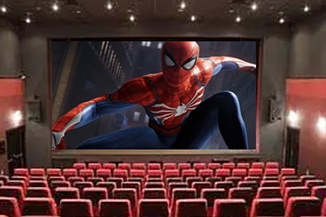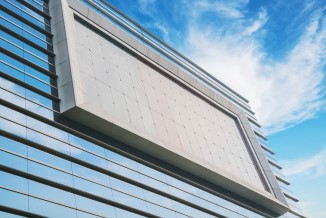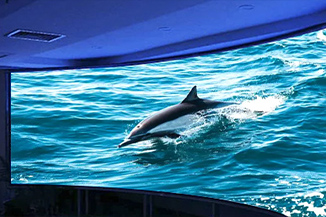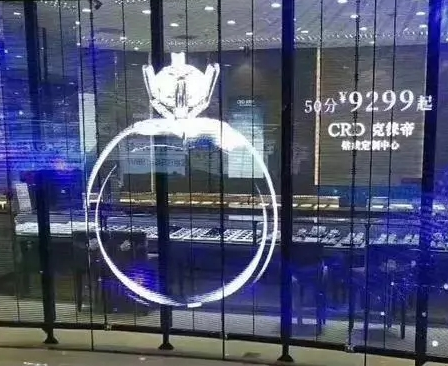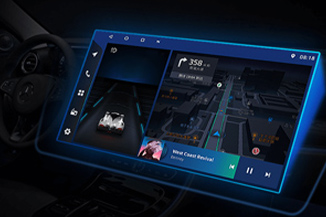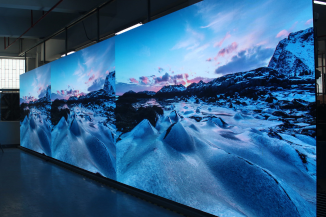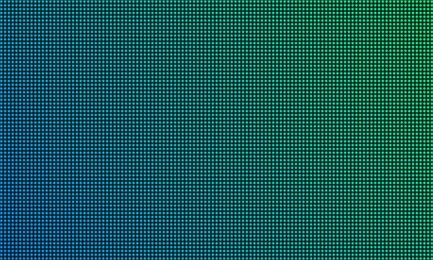Publisher: Supplier of LED Display Time: 2022-09-21 17:13 Views: 1284
In the face of the further attack of the P0.7 spacing standard, industry insiders pointed out that "cost is the most worrying issue for laymen, but it is not a problem for experts."
This is because the positioning of P0.7 micro-pitch must be high-end display, and it is for those customers who demand performance as the center. At this point, within 100-200 inches, P0.7 is not only sufficient and in line with the development of existing LED display technology, but also the effect is significantly higher than that of competing products, with obvious differences. This is just like any generation of small-pitch LED products that are "cut into the high-end market" and quickly gain market recognition. From the perspective of cost, it is not difficult for P0.7 products to gain a firm foothold in the high-end market.
However, to truly efficiently manufacture P0.7 products, the industry is still in the early stages of a mature process. Compared with P1.0, the number of components per unit display area of P0.7 is doubled. The changes in this step are more or less said: basically, it is possible to inherit the technical experience accumulated by the previous P0.9-p1.0 products, and it also requires a new challenge to unknown difficulties - that is, "can do" There is a "psychological bottom" in this matter; but it is not an "easy goal" either.
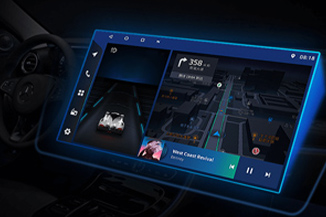
In addition to cost and process technology challenges, another challenge for P0.7 products may be "never before in the small-pitch LED industry":
The application of large LED screens has never been based on standard resolution, but a DIY "building block mode". This is very different from the liquid crystal display, which adopts the 4K standard on 55/75/86/98 inches, and forms a differentiated "dimension line" under the unified resolution standard. The application of 100-200 inches is often an "all-in-one machine" rather than a splicing project. This requires small-pitch LED companies to change from "DIY engineering thinking" to "standard all-in-one thinking".
This change means that LED large-screen companies need to find the most conventional "application size requirements" from numerous demand research data, and combine them with technical capabilities to form similar to: 4K resolution, 120 inches, 150 inches, 180 inches , 200 inches and other fixed cell sizes, but supply lines with different pixel pitch densities. As a result, the seemingly similar 110/120/130-inch units need to use a "dynamically adjustable process technology structure" that fluctuates the P0.7 pitch standard. This also requires that the lamp beads and LED crystals oriented to the P0.7 standard may have to design products from an "extreme angle", such as to be compatible with applications with wider spacing between P0.6-p0.8.
In addition, in the micro-pitch LED display market between 100-200 inches, small-pitch LED screen companies also need to face competitive challenges other than "products and technologies". This is an enterprise that uses traditional LCD commercial large screens as products. In other words, in the previous small-pitch LED market, LED large-screen enterprises competed with their peers, but now they need to expand the scope of competition to almost the entire commercial display market. It even has to face the competitive pressure of TFT-MINI/MICOR LED products launched by BOE and Huaxing Optoelectronics.
From the perspective of the final market structure, perhaps this change in "competitors" is the biggest challenge faced by small-pitch LED screen companies in the P0.7 era. It is a "larger-scale" contest far beyond product cost competitiveness, product process technology, product supply line layout, channels and service systems.
At the same time, this kind of competition with ICT, home appliance, and panel companies is unavoidable, and it is impossible to "retreat without fighting". Because the goals of these companies are by no means limited to 100-200-inch LED large-screen applications. Once they gain a firm foothold in this market segment, these brands outside the LED industry will also attack the traditional LED display market. . At the same time, the continuous progress of LED display technology in the future will inevitably further challenge the product indicators of smaller spacing, and even overlap with the LCD and OLED display product lines. Today, we will give up the competition with home appliances, ICT and other enterprises on the P0.7 equal spacing index. , which means giving up the technological upgrade and innovation space of "further narrowing of the spacing index" in the future. Therefore, the cross-industry war is inevitable in the P0.7 era!
To sum up, LED display products with P0.7 pitch will inevitably open up new space for industry growth under new application scenarios and new generation standards. However, winning this round of "opportunities" must be based on overcoming this round of "new challenges". And this will be the market competition challenge after the upgrade of a generation of products with "the most complex overall situation" that the industry has never faced. In this regard, small-pitch LED screen companies need to "start first and become stronger" plan ahead, and also need to increase the ecological layout of "combining vertical and horizontal" at the industry and market levels, and respond to new trends in the industry in a variety of ways.
The article is excerpted from Internet resources. If there is any infringement, please contact us to delete it in time. Thank you.


